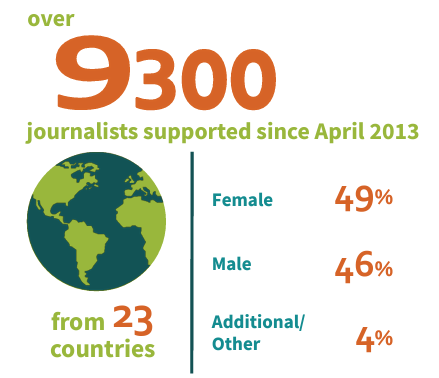Overview
SAFE is IREX’s flagship program to enable media practitioners and social communicators to continue their work as safely as possible. SAFE is experienced in supporting those working in closed and closing spaces, as well as other challenging environments.
SAFE equips these individuals with the means to resiliently continue their important work, and manage—as well as mitigate—the risks and threats they face in their day-to-day work. SAFE addresses safety through the unique lens of digital identity, physical awareness, and psychosocial care by delivering trainings in five regions spanning the globe.


